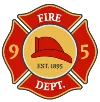- Home//
- Courses//
- About us//
- Contacts//
- Blog//
- News//
- Resources//
- Store//
- Privacy//
A “Hazmat and Hazardous Material Response Glossary” would involve compiling essential terms and definitions relevant to the handling, response, and management of hazardous materials (hazmat). This glossary is crucial for anyone involved in emergency response, environmental protection, industrial safety, and related fields. Here are some potential entries for such a glossary:
- Hazmat: Definition of hazardous materials and examples of common hazmat substances.
- MSDS (Material Safety Data Sheet): Explanation of what MSDS is and its importance in providing information about chemical properties, health and safety hazards, storage, and handling procedures.
- PPE (Personal Protective Equipment): Types of PPE used in hazmat handling, including respirators, gloves, and protective suits.
- Containment: Methods and strategies for containing hazardous spills to prevent environmental contamination.
- Decontamination: Processes and procedures for removing hazardous substances from people, equipment, and environments.
- Placards and Labels: Description of the labeling system used for identifying different types of hazardous materials during transport and storage.
- Incident Command System (ICS): Overview of the ICS, a standardized approach to the command, control, and coordination of emergency response.
- LEPC (Local Emergency Planning Committee): Role and responsibilities of LEPCs in preparing for and responding to chemical emergencies.
- Exposure Limits: Information about permissible exposure limits (PELs) and threshold limit values (TLVs) for various hazardous substances.
- HAZWOPER (Hazardous Waste Operations and Emergency Response): Overview of HAZWOPER standards and training requirements for workers handling hazardous waste and emergency response.
- Biohazard: Definition and handling protocols for biological hazards.
- Radiological Hazards: Information on types of radiological hazards and safety precautions.
- Transportation of Hazardous Materials: Regulations and guidelines for the safe transport of hazardous materials.
- Chemical Compatibility: Information on the storage and handling of chemicals to prevent dangerous reactions.









